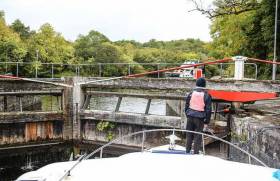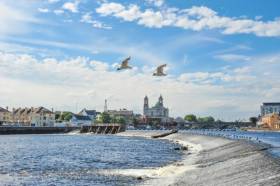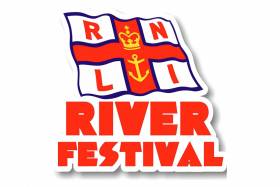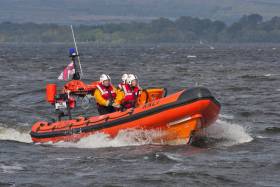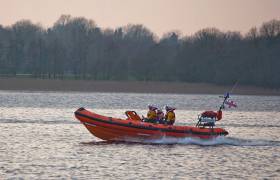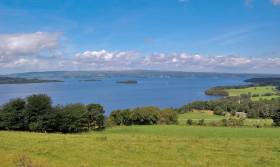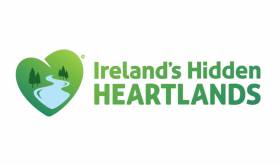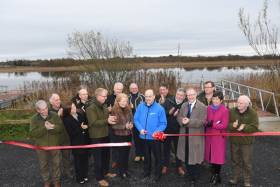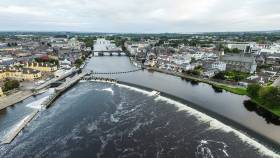Displaying items by tag: River Shannon
President Michael D Higgins To Speak At World Canals Conference In Athlone This September
#InlandWaters - President of Ireland Michael D Higgins has been confirmed as a guest of honour at the World Canals Conference in Athlone this autumn.
“We are honoured that the President who throughout his career has demonstrated his commitment to and love of the inland waterways of Ireland, their history and culture, has agreed to speak at the conference and we look forward to hearing how he perceives the restoration, regeneration and reimagining of the waterways,” organisers said.
There are 53 days and counting till the three-day conference from 10-12 September at the Radisson Blu Hotel Athlone under the theme ‘restoring, regenerating, re-imagining’ — with various tours and sessions designed to inspire and connect delegates coming to the Midlands from all around the world.
These tours include an excursion around Lough Derg, the largest and most southerly lake on the River Shannon, that takes in the 1700s bridge linking Killable and Ballina as well as the Ardnacrusha hydroelectric plant, and will explore the challenges of doubling moorings along an old navigation.
Another technical tour will explore the North Shannon, Lough Allen Canal and the Shannon-Erne Waterway, with a stop at the Acres Lake floating boardwalk and a look at the marriage of modern and traditional locks at Kilclare.
As previously reported on Afloat.ie, the conference will be preceded by the three-day Shannon Athlone Feastival, highlighting local food producers in an exciting festival atmosphere with rowing, raft racing, a Viking village and demonstrations of flyboarding that wowed the crowds at the recent SeaFest in Galway.
Special rates for accommodation on board luxury cruise liners are still available, as are a range of exhibition opportunities for organisations looking to network with delegates. Details can be found on the World Canals Conference website.
Masters and users of the Shannon Navigation are advised that a Smart Card system will be introduced at all locks on the navigation from 01 July 2018.
As Afloat.ie reported in March, Waterways Ireland says Masters of vessels will be able to use a Smart Card or pay in cash until 01 September 2018.
From 01 September 2018 payment will be by Smart Card only.
Where bridge lifting is required at Tarmonbarry and Rooskey, a combined toll payment for the lock and bridge will be taken at the Lock.
"From 01 September 2018 payment will be by Smart Card only"
The cost of the lock passage on the Shannon will cost two units from the smart card. The cost of the lock passage on the Lower Bann will cost 1 unit. The lock passage on the Shannon-Erne Waterway will remain at 1 unit. The 10 unit card costs €6.35/£5.55 and the 20 unit card costs €12.70/£11.10.
#InlandWaters - Mike Palmer of the UK’s Waterway Recovery Group has been announced as a keynote speaker at the World Canals Conference in Athlone this September.
Chair of Britain’s national co-ordinating body for voluntary labour on inland waterways, Palmer will address the conference on the topic of ‘Waterways in Progress - the Waiting Gain’ — how restoration schemes are not just a means to an end, and can bring quantifiable benefits at every stage of their development.
Palmer is the latest of a growing list of keynote speakers to open the three-day conference at the Radisson Blu Hotel Athlone from Monday 10 to Wednesday 12 September under the theme ‘Restoring, regenerating, re-imagining’.
Delegates will also be welcomed by the two-day Shannon ‘Feastival’ on Saturday 8 and Sunday 9 September, with Athlone hosting boat tours to taste a range of food and crafts made by local artisans.
The deadline for early bird discounts has been extended to next Friday 15 June to benefit from up to 20% off the cost of registration.
Special prices are also available for accommodation on board a luxury hire cruiser before, during and after the conference, as previously reported on Afloat.ie.
Athlone River Festival Promises A Fun-Filled Weekend
#Festivals - The River Shannon will come alive with the Athlone River Festival later this month.
The Shannon has long been the base for festivals in the midlands centre, from the original Athlone People’s Regatta in the 1920s to the Athlone River Festival in the 1990s that was revived in recent years.
And this year, over the weekend of 30 June and 1 July, festival fever will be hitting Athlone once again thanks to Waterways Ireland and with the support of Westmeath County Council and Lough Ree RNLI lifeboat volunteers.
“Lough Ree RNLI has received huge support from the communities around Lough Ree and we would like to repay the community with a fun-filled water-based weekend for all to enjoy,” said lifeboat volunteer Damien Delaney.
Saturday 30 June will see the IWAI motor cruiser flotilla sail-past and arrival into the town, prior to the start of the TriAthlone.
On Sunday 1 July, activities start at 10.00 am with the very popular junior fishing competition organised by Athlone anglers, followed by a variety of activities including a sailing demonstration, rowing races, sub-aqua demonstration, flyboarding and the main event, the RNLI raft races — which this year come with a new junior category.
A full timetable and further information, including entry details for the raft race and contacts for interested sponsors, can be found on the Athlone RNLI River Festival Facebook page.
#RNLI - Lough Derg RNLI launched yesterday evening (Thursday 10 May) following a request by Valentia Coast Guard to assist a person on a 23ft speed boat broken down by The Goat Road on the eastern shore of the River Shannon lough.
The lifeboat, with helm Dom Sharkey, Eleanor Hooker and Ger Egan onboard, arrived on scene at 6.28pm where a passenger vessel, the Shannon Princess, was waiting by the speedboat.
Weather conditions had south-easterly Force 3/4 winds, with very good visibility.
The skipper of the speedboat had dropped anchor, but it was dragging and bringing the vessel close to rocks on the Clare shore.
An RNLI volunteer was transferred across to the casualty vessel, where the person on board were found to be safe and unharmed and wearing their lifejacket.
After a thorough check of the cruiser, it was determined that the issue was most likely an electrical failure.
The lifeboat volunteer got the casualty vessel ready for tow, lifeboat brought it to Portumna Harbour, where it was safely tied up by 6.50pm.
Dom Sharkey, volunteer helm on the Lough Derg lifeboat, said: “The skipper did the correct thing to drop anchor and to call for help immediately.
“We would like to thank the skipper of the Shannon Princess for standing by in safe water until we arrived on scene.”
Lough Ree Lifeboat Launches To Report Of Person In River Shannon
#RNLI - Lough Ree RNLI’s volunteer lifeboat crew conducted a search of the River Shannon yesterday morning (Saturday 28 April) after a report of someone entering the water.
The Irish Coast Guard alerted the lifeboat station at 5.14am after a report from a member of the public to the possibility of someone entering the River Shannon in Athlone town.
The volunteer crew of lifeboat The Eric Rowse were quick to respond and were soon conducting a search above and below the weir in the centre of Athlone town. Conditions were very calm as dawn turned into a clear bright morning.
After searching a large area of the river and with regular communication with the Irish Coast Guard at Malin Head, the decision was made to stand down the search at 6.54am and the crew returned to station.
Speaking after the callout, Lough Ree RNLI lifeboat operations manager Tony McCarth said: “If you suspect you have seen someone fall into the river, throw one of the many life rings that are along the river banks to them with the end of the safety rope secured so doesn’t end up in the river too, then pull them back to the shore and call 999 or 112 and ask for the coastguard.”
#Angling - RTÉ News reports on concerns among anglers on Lough Derg over Irish Water’s plans to pump water from the River Shannon to supply Dublin and the Midlands.
The utility has proposed a pipeline from Parteen Basin, south of Lough Derg, to the capital in order to deal with water shortages due to leaks in the ageing infrastructure.
But the plan has come under fire from campaign groups, who claim the case for such a project is backed by “false statements and mathematical errors”.
And anglers are also fearing the worst over the scheme that would see 330 million litres pumped each day from the Shannon.
Citing difficulties experienced last summer when levels dropped by as much as two feet after a water release by the ESB at Ardnacrusha, Lough Derg anglers’ representative Joe O’Donoghue says the potential harm to boating and the Shannon ecosystem have not been taken into consideration.
#Tourism - ‘Ireland’s Hidden Heartlands’ is the new tourism brand for the Midlands region, with a particular emphasis on its inland waterways.
More than 10,000 consumers gave their put to Fáilte Ireland on the development of the brand, which hopes to “bring to life the Midlands' rich natural assets including its many lakes, walkways and blueways”.
The River Shannon will be a central focus, with a Shannon Master Plan currently being developed by Fáilte Ireland in partnership with Waterways Ireland to drive tourism opportunities both on and off the water and in surrounding towns.
A series of food networks and trails will also be developed as part of the new brand.
Launching Ireland’s Hidden Heartlands in Athlone last Friday 13 April, Transport Minister Shane Ross said the brand “will significantly enhance the Midlands as a tourism experience and bring growth and jobs to the whole region.
“We have always been committed to ensuring that Ireland’s success as a world-class tourist destination is shared among the regions. Some of the country’s finest natural assets are in the Midlands, including spectacular lakes, walkways and blueways. Ireland’s Hidden Heartlands will bring these gems to life, offering a unique experience to both domestic and international visitors.”
Ireland’s Hidden Heartlands will cover the ‘heart’ of the country, from Leitrim down to East Clare and extending through Longford, Roscommon, East Galway, as well as parts of Westmeath, Cavan, North Tipperary and Offaly.
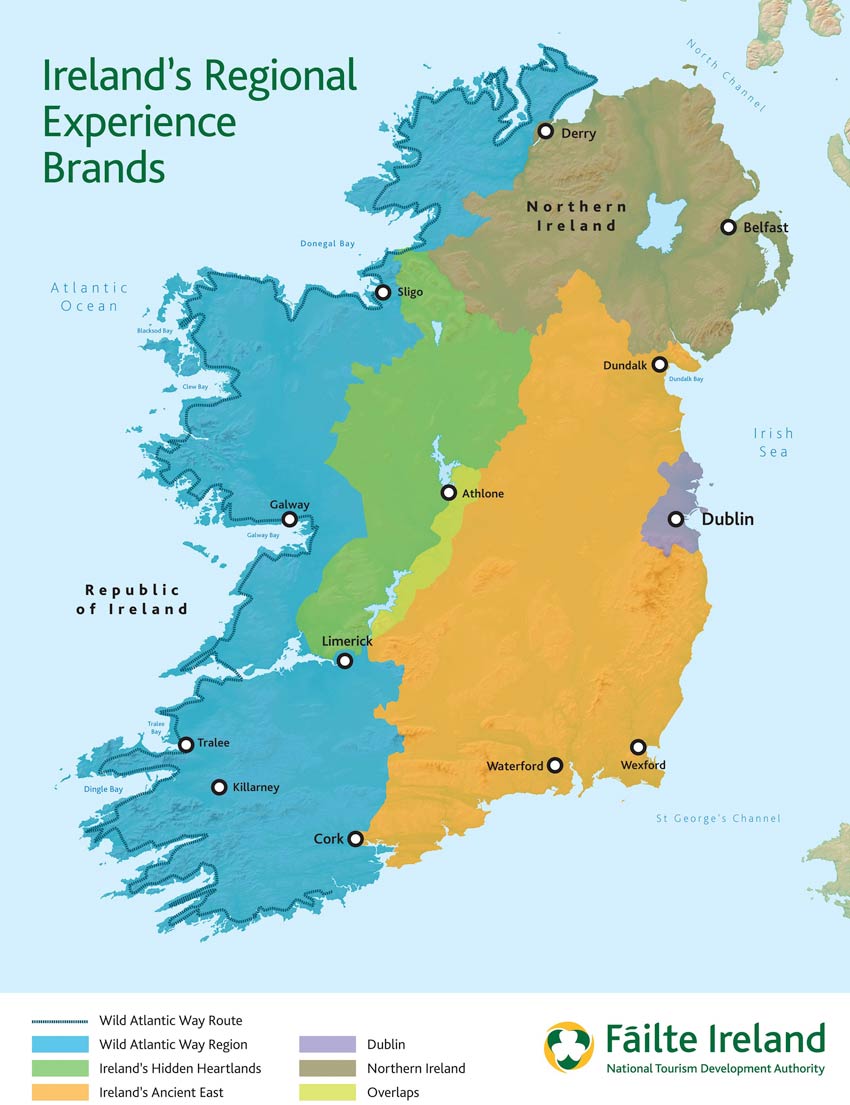
It will complement Fáilte Ireland’s other key brands in the Wild Atlantic Way, Ireland’s Ancient East and Dublin.
“Ireland’s Hidden Heartlands has been developed after months of extensive market testing both here and overseas,” said Paul Kelly, CEO of Fáilte Ireland. “The overwhelming feedback is that visitors from key markets want the opportunity to explore Ireland’s natural gems and rural communities.
“There is also a huge appetite out there for tourists to be active in nature through activities like walking, cycling, angling and boating routes – all of which the Midlands can offer in abundance.”
An initial €2 million has been allocated to start the development stage of the brand, with further funding to follow. This first round of investment will help to develop visitor experiences, support industry development and develop marketing campaigns for the region.
New Angling Developments Launched In Roscommon & Leitrim
#Angling - Denis Naughten, Minister for Communications, Climate Action and Environment, has officially launched two new angling developments by Inland Fisheries Ireland (IFI) at Emlaghroyan in Roscommon and ‘The Mudflats’ at Carrick-on-Shannon in Co Leitrim.
A new match angling stretch has been provided at Emlaghroyan, on the River Suck in Roscommon, with upgraded car parking and drive-to-peg facilities.
This development involved upgrading existing roadways and the construction of new access roadway.
Ten new match angling pegs have been provided, with a capacity for further extension.
The Suck Valley Angling Hub were recently granted additional funds through the National Strategy for Angling Development (NSAD) to extend the match venue to further promote tourism angling and facilitate match competitions in the Roscommon/East Galway area.
Together with recently unveiled developments on the River Suck at Lough Acalla, the total investment in the River Suck project was €87,000.
In Leitrim, another major 2017 development project has been completed with an investment of €103,000, providing new facilities at ‘The Mudflats’ on the main River Shannon at Carrick-on-Shannon.
The new floating angling stand is accompanied by improved roadways and parking, upgraded toilet facilities and a new slipway.
This is another important match angling venue, used widely for international match angling events such as the World Pairs and the Carrick Angling Festival.
Speaking in Carrick-On-Shannon after the ribbon-cutting ceremony yesterday (Friday 1 December), Minister Naughten said: “I am delighted to mark the official opening of these developments today. Both were completed under the National Strategy for Angling Development (NSAD) and greatly enhance the angling infrastructure in both counties. They will provide a boost to angling tourism potential in the region, which in turn should increase visitor numbers.
“Furthermore, these projects would not be possible without the cooperation, agreement and vision of the respective landowners and I would like to thank all those involved for their contribution to these developments.”
More applications from the region are currently going through the NSAD assessment process, and aim to enhance the angling infrastructure in the upper Shannon areas as well as promote participation in angling.
Two weeks ago Minister Naughten unveiled new angling infrastructure in Galway and Athlone, as previously reported on Afloat.ie.
Athlone To Host World Canals Conference Next September
#InlandWaters - Waterways Ireland and the Inland Waterways Association of Ireland will host the World Canals Conference 2018 in Athlone next September on the shores of Ireland’s longest waterway, the River Shannon.
‘Restoring, regenerating, re-imagining’ is the theme of the three-day conference from 10-12 September at the Radisson Blu Hotel Athlone that will feature various tours and sessions designed to inspire and connect delegates from all over the globe.
Register soon for to take advantage of the early bird rates ranging from €345 to €385. Some conference tours also have limited numbers so book early to secure your preferred tour and discount.
Special prices are also available for accommodation on board a luxury hire cruiser before, during and after the conference.
Cruisers can be booked for four to 14 nights, with four nights’ free mooring at the full service marina adjacent to the conference venue for the first 10 bookings.
For prospective conference speakers, the organisers are inviting abstract submissions till 28 February 2018 within the remit of the theme across the engineering, tourism, recreation, health and well-being, communications, technology, and arts and heritage sectors.
For more on the event, visit the World Canals Conference 2018 website or sign up for the newsletter for regular updates.



























